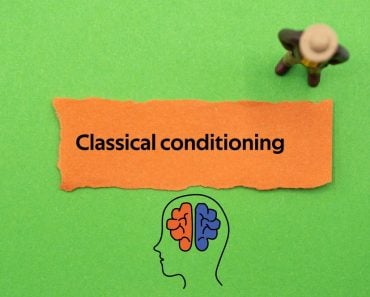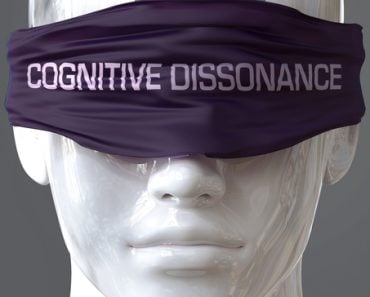Positive reinforcement is the introduction of a desirable stimulus after a response to reinforce it. Negative reinforcement is the termination of an undesirable stimulus after a response to reinforce it.
Can you remember an instance where you felt pleased upon receiving praise after performing a certain task well, and subsequently worked to keep up your performance? Or how about an instance when you threw a tantrum over buying the latest model of a toy and eventually received it, but only after you started bawling your eyes out? These experiences are somewhat ubiquitous throughout childhood and may even continue into adulthood, although perhaps in an altered form. The associated responses involve a form of learning where ‘an individual operates in his or her environment to produce a change in it.
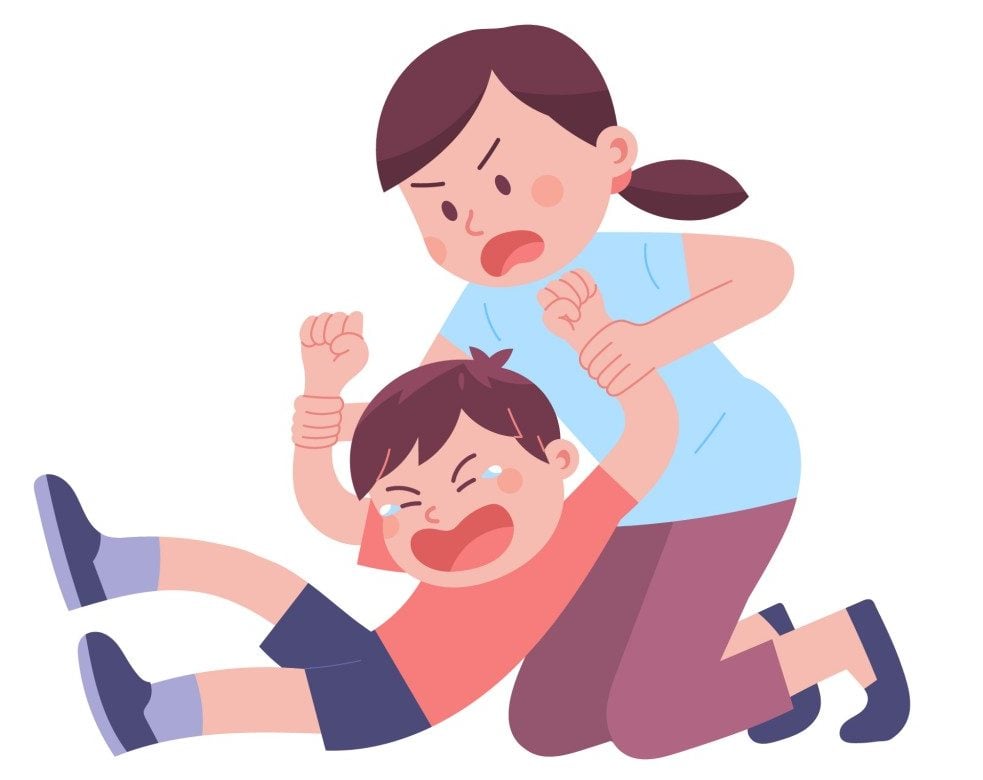
Recommended Video for you:
B. F. Skinner And Operant Conditioning
It was B. F. Skinner who proposed the theory of operant learning in his quest to study directly observable behaviors. He conducted a series of experiments with rats to extend his theories. To begin with, an animal was placed in the ‘Operant Conditioning Chamber’, later termed the ‘Skinner box’. It was expected to press a lever in the box to receive a pellet of food. After exploring its environment and a certain number of trials, the rat learned to make the response that would deliver food. Another experiment involved the rat learning to press the lever in order to avoid receiving an electrical shock.
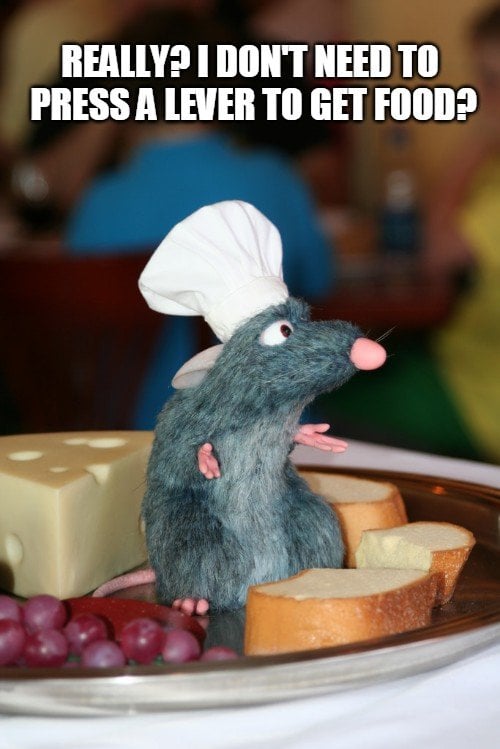
Instrumental Learning
An organism is said to ‘operate’ or make specific voluntary responses in a certain environment in order to produce a change in it. Here, individuals are believed to behave according to the stimuli, i.e., events, objects or situations that precede behavior. Their response is not limited to something that they do; it can also include the way they think and feel. This theory is also called ‘instrumental learning’ because an organism and the specific behavior are both instrumental in producing the subsequent change, and thus, in the process of ‘learning’.
Simply put, people learn to act in ways determined by the outcome that follows their action. If a specific behavior is followed by a desirable outcome, that behavior is likely to occur again, because it is ‘reinforced’. A response followed by something undesirable is unlikely to occur again. The increase in the tendency of a behavior follows the pattern of reinforcement here. Thus, a reinforcer is something that increases the occurrence of the behavior it follows.
Think about the examples earlier in the article. Receiving praise strengthened your willingness to make efforts to perform well, while the toy you received to make you stop crying probably strengthened your tendency to cry to receive what you wanted on further occasions. In Skinner’s experiments, both the food pellet and the avoidance of shock strengthened the rat’s response towards pressing the lever. The above are all examples of reinforcers, as they contributed to the increase in the tendency of a certain behavior.

It is notable that the avoidance of something can also work in the reinforcement of a response, and is thus considered a reinforcer. When you wear your seat belt, you’re acting to avoid or terminate negative stimuli, such as the beeping noise that alerts you to wear it, a violation of traffic regulations or the possibility of injury. There are many instances in our life when we act in a certain way to avoid something unpleasant. These examples bring forth the positive and negative nature of reinforcers and the reinforcement they produce.
Positive Reinforcement And Negative Reinforcement
You receive good grades on a test and are praised. You prepare well the next time to keep those grades up. You score poorly on a test and are sternly reprimanded. You study well the next time to avoid receiving another bad grade.
The response of studying for the test is reinforced in both scenarios. However, it is the events that reinforce it that create the distinction between positive and negative reinforcement. In the former scenario, receiving praise is contingent on the act of performing well (if you perform well, then you receive praise), thus acting as a stimulus that strengthens that behavior. The latter involves the avoidance of reprimands acting as the stimulus that reinforces studying.
Positive reinforcement involves the delivery or presentation of a desirable stimulus after a response, thus reinforcing it. Negative reinforcement involves the termination or removal of an undesirable stimulus after a response, which reinforces it. In the case of reinforcement of behavior, the outcome of that particular response is generally considered ‘pleasant’, regardless of whether it is positively or negatively reinforced. The removal of a negative stimulus is pleasant, after all, and thus works in making the response preceding it more likely to be repeated. Playing music to end boredom is another example of the above. The elimination of boredom that follows the response of playing music serves to reinforce it. Negative reinforcement studies also relate to escape and avoidance conditioning. The avoidance of or escape from a certain aversive stimulus can lead to learning certain behaviors, such as wearing a sweater to avoid feeling cold.

Challenging Misconceptions
Are All Positively Reinforced Behaviors Good?
The terms positive and negative reinforcement are simply indicators of the introduction or removal of a certain stimulus. They must not be assumed as being ‘good’ or ‘bad’ due to their semantic connotations. The high that comes from using a drug may serve as a positive reinforcer in fueling drug abuse. Clearly, not all positively reinforced responses have positive or ‘good’ connotations.

It is often observed that parents dealing with a child who is throwing tantrums or crying, will often shower the child with attention, hugs, or give him/her toys. While this may be effective in the short term, this ends up reinforcing undesirable behaviors. In order to achieve ‘extinction’, i.e., the termination of a reinforced response, it is necessary to terminate the reinforcement. The positive reinforcement of wrongful responses can have detrimental impacts on an individual and society as a whole. Often, when a child trips over something and falls, the response of hitting or blaming an inanimate object is reinforced by the parents. Later, the individual may choose to generate the same response to similar stimuli, i.e., a generalization of the response.
Is Negative Reinforcement Synonymous With Punishment?
It is common to confuse the terms ‘negative reinforcement’ and ‘punishment’. The word negative is taken to imply the opposite of reinforcement, but should not be confused with punishment. Punishment functions as an antithesis of reinforcement, as it serves to decrease the tendency of a behavior. Thus, any response followed by a punishing stimulus is less likely to be repeated. However, “negative” in this context is simply the termination of a stimulus, be it desirable or undesirable to the individual. Like reinforcement, punishment includes both positive and negative punishment. Positive punishment introduces an aversive stimulus to reduce a response, such as reprimanding someone for getting into a fight. Negative punishment is the termination of a desirable stimulus to reduce a response, such as the taking away of certain privileges after someone gets into a fight. Both reinforcement and punishment involve the introduction or removal of certain stimuli, but serve to fulfill opposite functions.
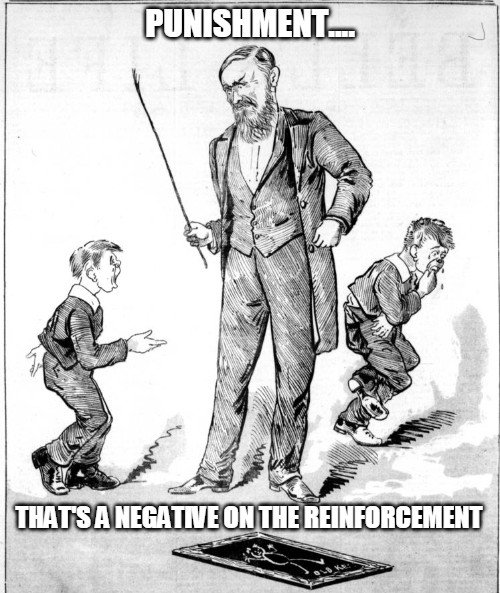
Are We All Puppets To Reinforcement Techniques?
Is the pattern of behavioral reinforcement universal—uniform across different people and situations? Just like every other model of behaviorism that seeks to study directly observable behaviors and their control mechanisms, there are numerous factors that the Operant Conditioning model fails to consider. However, the type of response-reinforcement pattern explained in this article is prevalent in many of our learned behaviors.

The next time you find yourself performing better at something after being reinforced with a tasty chocolate, take a moment to remind yourself that you’re never too old to fall into that trap of sweet goodness!
References (click to expand)
- Hefferline, R. F., Keenan, B., & Harford, R. A. (1959, November 13). Escape and Avoidance Conditioning in Human Subjects without Their Observation of the Response. Science. American Association for the Advancement of Science (AAAS).
- Perone, M. (2003, April). Negative effects of positive reinforcement. The Behavior Analyst. Springer Science and Business Media LLC.
- George, O. (2019). Negative Reinforcement Mechanisms in Addiction. Neural Mechanisms of Addiction. Elsevier.
- Behaviorism In Psychology.
- Operant Conditioning In Psychology: B.F. Skinner Theory.
- King R. A. Y. &. R. A. (1979). Introduction to Psychology: Study Guide to accompany Morgan/ King/ Robinson (Sixth Edition). McGraw-Hill Book Co., N.Y

